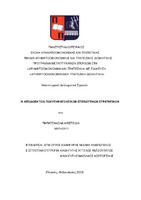Η απόδοση των πολυπαραγοντικών επενδυτικών στρατηγικών

View/
Keywords
CAPM ; Αναμενόμενη απόδοση ; Κίνδυνος ; Συντελεστής beta ; Πολυπαραγοντικό μοντέλο ; Μεταβλητότητα ; Αξία ; Ορμή ; ΡευστότηταAbstract
The Capital Asset Pricing Model (CAPM) describes the relationship between expected return and risk of an investment. It is based on the assumption that investors are rational and seek to maximize their expected utility. The CAPM states that the expected return of an investment is equal to the risk-free rate plus a risk premium that is based on the security's beta, which measures its volatility relative to the overall market. A security with a beta greater than one is considered riskier than the market, and therefore should have a higher expected return.
On the other hand, multi-parameter models are an extension of the CAPM that take into account additional factors beyond beta to explain the expected return of an investment. These models are also known as multi-factor models, and they often include additional parameters such as size, value, momentum, and liquidity. These factors are found to have statistically significant relationship with return.
The main difference between the CAPM and multi-parameter models is that the CAPM only takes into account one factor to explain the expected return of an investment, while multi-parameter models take into account multiple factors. This allows multi-parameter models to provide a more comprehensive explanation of the expected return of an investment. However, multi-parameter models are also more complex and require more data to estimate the parameters.


